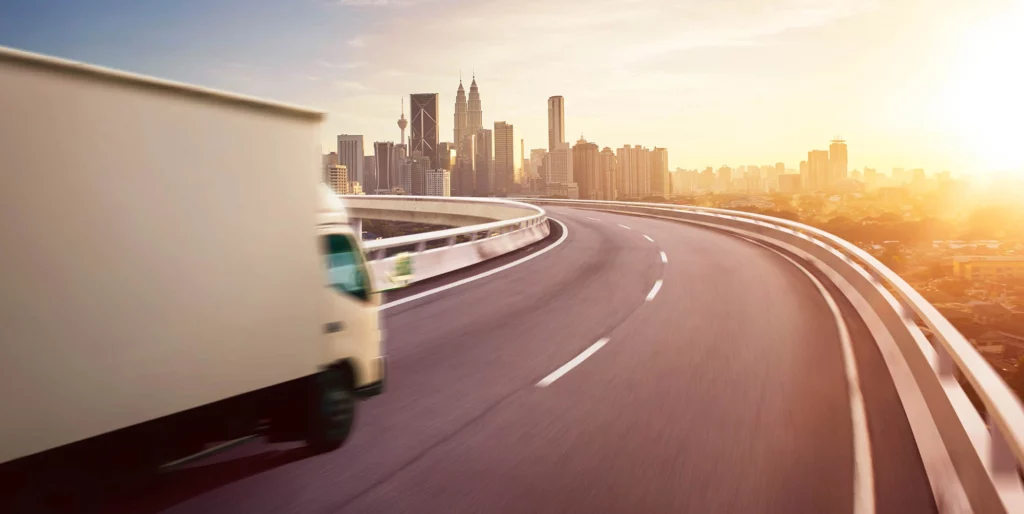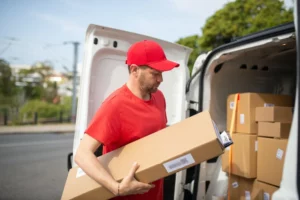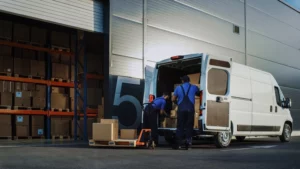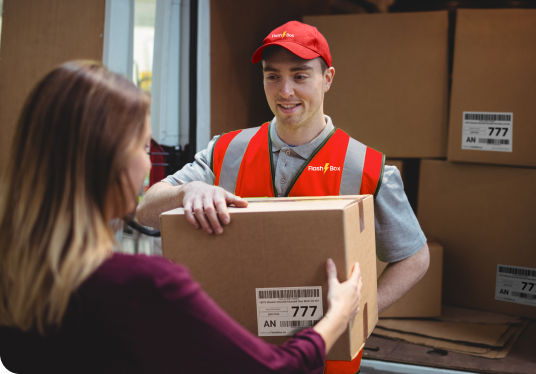Online selling has expanded into avenues we could have never predicted. All types of online buying, from eCommerce to social media shops, have seen an exponential growth over the past year. But what is quick commerce, and where did it’s sudden appearance in the market stem from?
Quick commerce is changing the digital shopping world. Major quick commerce sellers are causing rising customer expectations as all buyers begin to expect the best delivery standards from all sellers. The quick commerce market is consistently growing, and customer demands are as well. To keep up with the giants and have a strong competitive edge over customers, transitioning to quick deliveries is a must.
What is Quick Commerce?
Quick commerce, or q-commerce, is a type of eCommerce store that delivers their goods extremely fast, typically within only a few hours.
Quick commerce stems from the delivery method created for restaurants. When home delivery began, fresh food had to be delivered to customers directly, or through point-to-point delivery. This idea was shifted slightly to fit other industries and is now being used to meet consumers’ needs outside of food deliveries.
Quick commerce can range from minutes to hours in terms of delivery times. Typically, the longest delivery that would qualify for a quick commerce experience would be 24 hours. This is because 24 hour delivery is commonly known as “express delivery”. Hence, the differentiating factor is the speed, and quick commerce is faster.
Quick commerce, however, requires a different set of infrastructure than other types of online delivery stores. Optimizing last-mile delivery is not an easy task and needs a significant amount of attention given to the details of delivery. Driver routes need to be optimized, customers need to be kept in the loop, and deliveries need to be extremely fast.

What’s the Difference Between Quick Commerce and Traditional eCommerce?
So how do quick commerce stores operate differently than traditional eCommerce? Obviously, there are a few major differences that affect not only the buyers, but the sellers too.
Here are some of the most notable differences between quick commerce and more traditional eCommerce.
Delivery speed
The first major difference between quick commerce and eCommerce is delivery speed. As previously touched on, quick commerce completes orders and deliveries in just a few hours. On the other hand, other methods of delivery rely on traditional delivery, which is typically 3-4 days or more (at least!).
But how is this done? Quick commerce relies on micro fulfillment centres (otherwise known as MFCs). These are warehouse stores in urban areas around where most buyers will be living. These MFCs allow orders to be picked and sent out for delivery to customers within the immediate area. Most deliveries can be made within about an hour or so, so everyone close by can order through quick commerce stores.
In addition to location, quick commerce stores rely on innovative technologies. Processes like demand forecasting for inventory, inventory allocation, and last-mile delivery all need to be streamlined in order to function. Hence, a fast and reliable last-mile delivery carrier is essential to quick commerce.
In comparison, eCommerce stores might require many more parts of delivery in order to get goods to customers. Companies shipping further have to also set up first and mid mile delivery processes for customers who are not within the same area as the facility or warehouse. This not only increases the overall cost, but lengthens the delivery time, forcing customers to wait much longer to receive their items.
Fulfillment
A second key feature that differentiates quick commerce from eCommerce is the types of warehouses used to complete orders. Not only are they in different locations, but they are vastly different in size.
Most warehouses take up entire blocks, sometimes as large as 30,000 square feet. Amazon warehouses average a whopping 800,000 square feet. This means they need to be in rural areas outside of major cities, where they have the space to build such colossal spaces. Being outside of the city extends the time it takes to deliver to most customers, who tend to be living in downtown cores.
Quick commerce warehouses are typically only 2,000 – 5,000 square feet in size, which are much smaller in comparison to others. These sizes of warehouses can be closer to urban areas, where the majority of online shoppers are located. Hence, deliveries can be made much faster because products are already closer to their end destination and the travel time is significantly shortened.
Quick commerce also changes how products are moved through supply chains. Items are not left in warehouses for days on end. Instead, they are moved and sorted very quickly, which is how the warehouses can be so much smaller. Parcels only spend a few hours, at most, inside MFCs before they are passed onto drivers for delivery.
Quick commerce stores also tend to work with multiple MFCs instead of one larger warehouse. Giants like Amazon bring everything to one warehouse and distribute to a large area from there. Quick commerce stores only distribute to the area directly around the MFCs.
Products
Finally, the products shipped through quick commerce differ from traditional online retail. Since products are delivered so fast, various means of transport are typically used. While some companies might use transport trucks to ship goods nationwide, most quick commerce stores rely on last-mile delivery couriers that use cars or even bikes to deliver items.
Hence, most quick commerce delivery options are for smaller goods that fit in an average sized box. This allows them to be delivered without the need for larger delivery trucks, and especially as quick commerce suits urban cities, makes it easier to navigate the more populated areas.
Quick Commerce Benefits
1. Competitive edge
Becoming a quick commerce store gives you a strong competitive advantage. While one of the major reasons consumers choose not to buy from a seller is the delivery speed, this is one problem you won’t face. Your fast delivery times will be an edge you can rely on to stand out.
Most of the major online sellers take days, if not weeks, to ship goods to customers. If you’re able to beat this by offering same-day delivery, customers have a reason to come back to you time and time again.
2. Better customer experience
Quick commerce offers a much better customer experience than traditional eCommerce. This method of fast shopping addresses the issues customers most often face with online retailers.
These problems are likely delivery related – most often they’re delivery time and cost. First, you obviously offer faster delivery. And second, your delivery costs will be lower since you’re only taking care of the last mile. (Tip: major couriers still make the last mile of delivery expensive, but local couriers are the better alternative).
3. Opportunity for better sales
Becoming a quick commerce store is a great way to increase sales.
This might seem counter-intuitive, but it is true. You probably believe that since quick commerce limits where you can deliver to, you’ll sell less. After all, marketing a smaller geographical area limits the number of potential customers. However, the demographic quick commerce stores targets is actually much more influential.
The target audience for quick commerce is a wealthier group than normal. Buyers who pick faster delivery such as quick commerce are often willing to spend a little more on delivery and online shopping when it means they save time. Hence, quick commerce stores can charge for delivery and will sometimes even see higher average cart volumes because of who they target.
4. Increased reliability
Most customers choose to buy from a quick commerce store because of the added reliability they can offer. Most q-commerce stores rely on technology and innovative solutions to get customers their orders so quickly. This technology also means that the deliveries are highly tracked and surpass typical delivery expectations.
The best quick commerce solutions offer live delivery tracking and real-time notifications for customers to see exactly where their parcels are when they will arrive. This increased visibility is a massive bonus for customers, and most of them are looking for online buying opportunities that offer it.
5. Improved buying ease
The faster the delivery, the less the customer has to do to acquire their items. Fast delivery is much more convenient than waiting days to receive a package.
Plus, same-day delivery is a substitute for running out to a store to grab just one or two items. Instead of leaving the house, getting to the store, finding the item, and then returning home, all of this can be done in just a matter of minutes. Quick commerce is a quick fix to daily errands, and the low cost of the added delivery is the exchange for the added time to the customer’s day.
6. Lower logistics costs
One of the best reasons to convert to a local quick commerce store is the low costs of transportation. By only offering delivery within hours, you limit the area where you offer delivery to. While this might seem like a disadvantage, you don’t need to pay for first or mid-mile logistics fees, like international transport.
Instead, quick commerce stores are only responsible for the last mile of delivery, which is delivering products directly to customers. While this has long been known as the most expensive of the entire delivery process, there are affordable methods available that can make it extremely cost-effective.
By avoiding the added delivery costs completely, you can save money and make customers happier. If you offer free or discounted delivery, more of the sale goes back into your pocket. If you charge customers for delivery, they are less likely to abandon their cart since the cost will be much more affordable. Lower logistics costs benefit everyone.
7. Better product fit
Quick commerce can accommodate products that normal delivery won’t sustain. For example, foods that can last in boxes for a few hours but left in a warehouse overnight. Hence, more products can be outsourced for delivery when quicker last-mile delivery is available to the seller.
However, this is different from point-to-point food delivery. UberEats specializes in foods that are taken from one point to another, with no middle point stop. Quick commerce solutions can help local bakeries or produce sellers who don’t need immediate delivery, but do need a solution faster than major couriers can offer.
How to Implement Quick Commerce
If quick commerce is right for you, how can you implement it into your online store?
Quick commerce is typically smoother when outsourced. Although you could manage your own micro-facility, there are last-mile delivery providers who can take care of it for you as long as you manage your own inventory.
If you want to begin outsourcing faster delivery, the first time is to decide on the area you need to find a provider in. What cities are you delivering to most often? This will help you find the spot you need to be working in.
Once you’ve decided where you want to offer same-day delivery, the next-step is managing your inventory. Same-day deliveries mean you need to pick, pack, and hand-off the orders to your delivery provider all within a few hours. Maintaining stock to make sure your products can be delivered quickly requires a strong sense of inventory management.
If your inventory is managed well enough to get orders out the door a few hours after they’ve been ordered, the next step is to find a partner to work with. Once you’ve found a same-day last-mile delivery partner, you’re set to start offering faster delivery and can convert your store into a quick commerce shop.
If a complete quick commerce solution doesn’t match your store, you can offer faster delivery for the customers who it suits and regular delivery for the rest. Offering options when it comes to delivery can benefit your business and help you appeal to a larger audience.
Quick Commerce with FlashBox
FlashBox allows merchants to offer same-day delivery to customers living near main Canadian cities. With sorting facilities located in prime locations, parcels are picked, packed, and delivered, all within about 10 hours or less.
FlashBox is the ideal solution for merchants looking to deliver faster to customers and find alternatives to major couriers. You don’t need to have your own warehouse or drivers and you can hand off the delivery to a reliable partner. Plus, parcels are all priced at flat-rate fees, so you can actually save money by switching to faster delivery options.
By outsourcing deliveries to FlashBox, you can compete with other quick commerce stores and giants like Amazon, who promise fast turnarounds to customers. You too can meet the growing customers expectations and become a quick commerce store just by picking up your delivery pace!
Get started today by creating your own account or speaking with a delivery expert to receive a tailored quote. Parcels prices are as low as $6 each, including all package sizes, weights, and destinations.
Want to find more tips on improving your business? Follow us on social media to be updated when we post!





